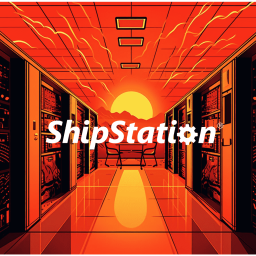Personalization has become an essential strategy for ecommerce merchants to boost sales, enhance customer loyalty, and stay competitive. For BigCommerce store owners, leveraging personalization can lead to significant revenue growth by optimizing the customer journey.
This guide will explore five innovative methods to maximize BigCommerce store performance with personalization. By tailoring product recommendations, site content, special offers, and more to each individual, merchants can influence purchasing decisions and develop lasting customer relationships.
Contact us
Targeting Repeat Sales Through Behavioral Personalization
Implementing behavioral personalization allows BigCommerce stores to serve up personalized product suggestions, custom messaging, and special offers based on how visitors browse and purchase. This level of customization significantly pushes up repeat order rates, average order values, and lifetime customer value.
Understanding Behavioral Targeting
Behavioral targeting tracks customer actions across devices and channels to build rich visitor profiles. Sophisticated algorithms then determine optimal recommendations and messaging to display to nudge the desired action, whether it’s an initial purchase, upsell, or repeat order.
For example, if a customer adds hiking boots to their cart but doesn’t complete the purchase, they can be targeted with hiking boot ads and special discount offers across sites. Or if they purchase tents and sleeping bags, they can be shown complementary items like portable stoves and lanterns.
Top Behavioral Personalization Apps
Several powerful behavioral targeting apps are available to enhance BigCommerce stores. Leading options include:
- Nosto: Offers real-time personalization across sites. Advanced segmentation and machine learning drive product suggestions.
- Barilliance: Provides personalized, on-site experiences and triggers real-time, multi-channel campaigns via email, SMS, and more based on behavior.
- Affirm: Increases average order value by offering customized financing plans to qualified customers.
- Yotpo: Leverages user-generated content like reviews and Q&As for social proof to boost conversion rates. It can prompt for reviews post-purchase based on buyer personas.
Strategies for Behavioral Targeting
There are several best practices BigCommerce merchants should follow to maximize the impact of behavioral personalization:
- Target visitors with complementary products based on current and past purchases to increase order values
- Prompt for reviews after the expected product delivery date, customizing the request by customer segment
- Schedule behavioral emails to re-engage lapsed contacts, win back abandoned carts, and notify customers of new arrivals based on purchase history.
- Create personalized pop-ups highlighting current promotions and product suggestions based on items viewed.
Well-executed behavioral targeting personalizes the journey before, during, and after the initial sale to push additional purchases and build loyalty.
Optimizing the Journey Through Personalized Content
Today’s customers expect ecommerce sites to serve content tailored to their interests and needs. Creating personalized content allows BigCommerce merchants to lead visitors to the right products by speaking to individual wants and pain points.
Crafting Customer Personas
The first step is developing detailed buyer personas based on customer demographics, psychographics, behaviors, and goals. Common ecommerce persona groupings include:
- Budget shoppers focused on the lowest prices
- Convenience seekers who value speed and simplicity
- Quality customers willing to pay more for premium products
- Brand advocates loyal to specific labels and companies
Accurately mapping personas allows merchants to create and test content variations to identify what resonates best with each target audience.
Tools to Test Content Personalization
A/B and multivariate testing tools are invaluable for optimizing personalized content. Leading options like Google Optimize and Optimizely make it easy to test different variations to determine which images, headlines, copy blocks, and calls to action perform best. Testing can inform variations across pages, pop-ups, product descriptions, on-site messaging, emails, and more.
Personalizing Key Pages
Certain pages lend themselves well to content personalization when tailored to different customer groups identified through the testing and analytics process:
- Homepage: Highlight top products from categories individual users have shown an affinity for in the past, feature hero images reflecting major personas (budget, convenience, etc.)
- Category pages: Display product selections optimized for different personas, integrate compelling reviews from similar customers.
- Product pages: Incorporate dynamic blocks to serve up specs/features/images based on the visitor’s persona, integrate visual indicators like badges to appeal to crucial values (budget choice, staff favorite, etc.) based on user segment
- Cart: Recommend complementary products personalized for each group, offer cross-sell promotions matching previously expressed interests
The more ecommerce content can be tailored to individuals’ wants, needs, and values from initial entry to checkout, the higher long-term revenue and loyalty will climb.
Building Loyalty Through Segmented Emails
Email marketing remains one of the highest-converting digital channels. BigCommerce merchants should develop segmented email campaigns tailored to different customer groups to maximize results. This allows for more personalized value and incentives while avoiding inbox fatigue.
Identifying Customer Segments
Groupings for email segmentation may include:
- New subscribers: Offer lead magnets and discounts to hook interest
- First-time buyers: Highlight post-purchase incentives like reviews for additional savings
- Repeat customers: Feature personalized new arrivals, bundle offers and loyalty rewards
- Non-converters: Re-engage those who previously browsed but didn’t purchase
- Lapsed contacts: Win back customers who haven’t purchased recently with special promotions
Additional subgrouping can be based on product category affinity, order history, buying frequency, monetary value, etc.
Mapping Segment Email Cadence
Each defined customer segment should have a mapped email cadence dictating optimal send frequency and offers. For example:
- VIPs: Send exclusive deals and early access emails 2x per month
- Repeat buyers: Send cart abandonment reminders after one day, personalized product emails 1x per week highlighting related items
- One-time buyers: Send a review request two weeks post-delivery with an extra 10% off completed reviews, new product arrival emails 2x per month
Setting rules for each segment prevents under or over-communication while delivering the most relevant value.
Personalizing Email Content
Email content should speak directly to the wants and needs of each defined customer group. Recommendation algorithms can suggest products with the highest affinity likelihood among segments with sufficient behavior data.
Additional personalization elements like first name personalization, individual order history summaries, and special discount codes make each subscriber feel uniquely valued. Personalized subject lines reflecting past purchases have also boosted open rates dramatically.
As email programs become more tailored for micro-segments, click-throughs, and conversion rates climb.
Increasing Order Values Through Smart Recommendations
Intelligent recommendation engines allow BigCommerce stores to match complementary products to each shopper in real time. The result? More add-ons, upsells, and higher average order values.
Top Recommendation Engine Apps
Several powerful personalized recommendation apps integrate seamlessly with BigCommerce:
- Nosto, again is a leader, applying advanced machine learning to serve products with the highest conversion probability likelihood for every visitor
- CQuotient tailors merchandising through predictive analytics, maximizing on-site sales
- Scalefast recommends results based on user intent, past purchases, and browsing history for increased average order values.
Strategies to Optimize Suggestions
Fine-tuning recommendation engines using segmentation and testing is vital to improving results. Useful tactics include:
- Spotlight top-sellers among past purchasers of specific items
- Feature products based on category affinity and frequency
- Adjust product suggestion zones for mobile vs desktop
- Test calls-to-action like “Frequently Bought Together”
- Spotlight items trending up in search rankings and ratings
Continuous testing and tweaking keeps product suggestions highly relevant and converting.
Boosting Order Values
Intelligent recommendations can incrementally increase order values in several ways:
- Suggest add-ons pre-checkout, like care kits for apparel purchases
- Offer one-click upsell prompts post-checkout, like priority shipping upgrades
- Enable quick add buttons to add suggested items with one click
- Prompt for recommended products in carts with sub-total eligibility for free gifts or discounts
With tactics tailored to each significant buyer segment, incremental add-on sales add up.
Creating Personalized Site Experiences
While the above personalization tactics focus on products, content, and messaging – visitors today expect ecommerce stores to deliver individualized site experiences. This means showing each shopper a version of the site and product assortment tailored to their needs.
Tools to Build Personalized Sites
A flexible site builder, advanced segmentation, and A/B testing capabilities are key to creating personalized site experiences. Valuable platforms include:
- Optimizely: Enables the creation of variations to test by segment with advanced analytics
- Evergage: Allows for data-driven personalization of entire site experiences
- Reflektion: Delivers AI-powered personalization, optimizing in real-time based on behavioral data and purchase drivers
Getting Granular with Targeting
The most sophisticated targeting goes beyond basic demographics and past purchases to uncover deeper buyer insights that maximize relevance. Helpful data points include:
- Site search keywords
- Email Engagement
- Cart abandonment
- Browser/device preferences
- Frequency of purchases
- Loyalty status
- Service ticket history
- Ratings and reviews left
- Product return frequency
- Preferred payment methods
- Age and life stage
This level of behavioral, contextual, and predictive data allows messages, product displays, and site experiences to hyper-target individual wants and needs.
Optimizing Experiences for Top Customers
Special treatment for top customer segments gives BigCommerce stores an edge. Tactics to provide VIP experiences for 20% of customers, driving 80% of revenue, include:
- Greet these visitors by name in site messaging
- Unlock exclusive promotions and early access to new arrivals
- Accelerate loyalty rewards point earning
- Feature personalized product recommendations matching past engagement
- Prioritize these segments for best pricing, free upgrades, and bundling
Delivering an experience that feels like an exclusive club for top spenders cements loyalty and lifetime value.
Savvy segmentation and personalization are no longer optional – they’re essential for competitive BigCommerce stores today. There are now more tools than ever to optimize every stage, tailored to the needs of website visitors. Merchants who embrace personalized behavioral targeting, content, email, and site experiences will steal market share while building devoted customer followings.



